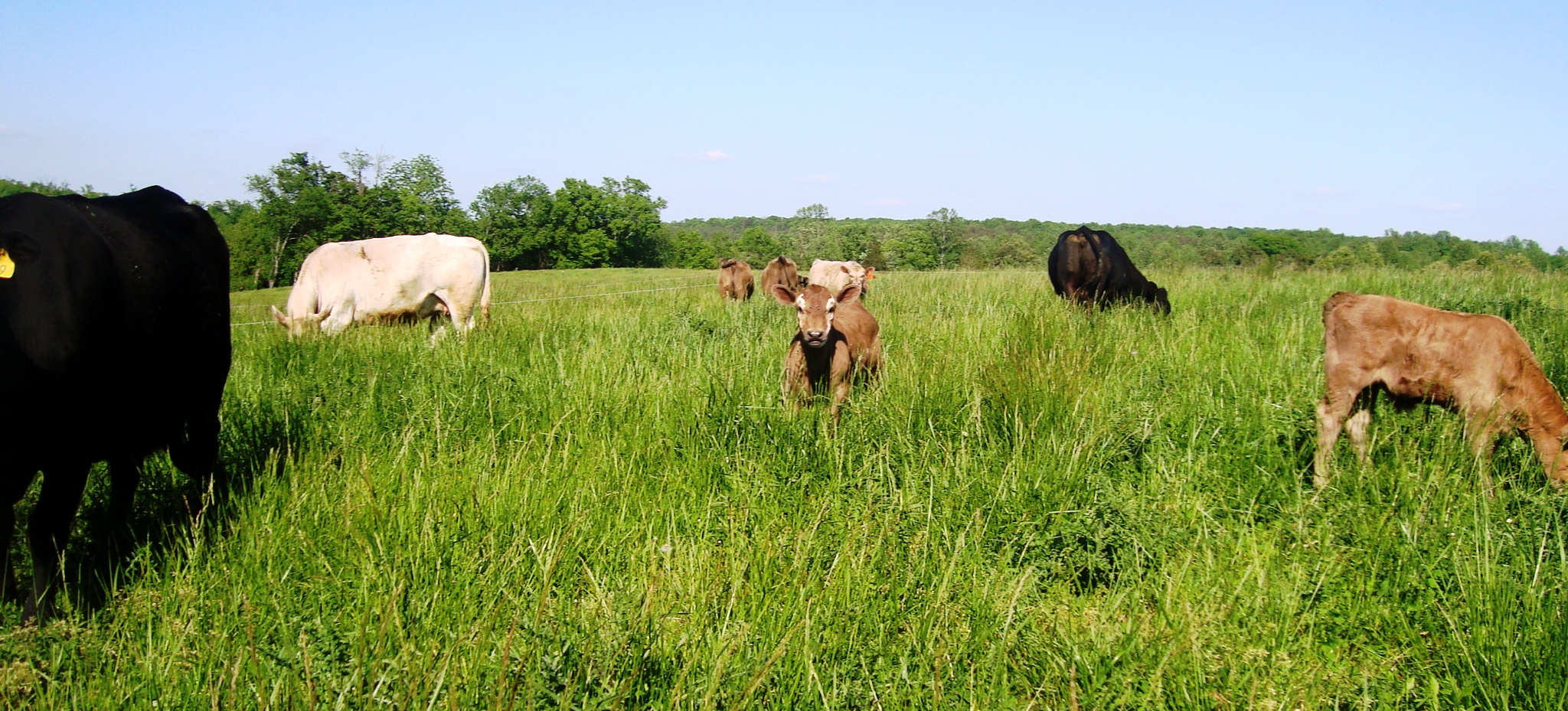From birth, dairy cattle – milk cows — are raised with constant and consistent human contact. Their handling from the day they are born is based on the fact that when they grow up, they’ll be milked two or three times per day.
Beef cattle are handled very differently. Other than the occasional show cow that’s in the herd, beef cows are raised with very little physical contact from humans. Beef cows view us as some sort of benevolent aliens, but they think we have cooties, and for the most part, they really don’t want us to touch them.
So how do we safely, effectively and humanely handle our cows and their calves so we can keep them healthy, treat injuries and monitor their growth?
We use special handling facilities – working pens – to help provide an environment that’s safe and comfortable for both the cattle and the handlers.
Handling facilities are designed and built to (hopefully) meet the requirements of the producer and their herd. Some are pretty basic, some are elaborate. Some are fixed, some are portable. Some are indoors, some are not. But while the designs are different, the overall concept is the same – a series of pens, leading to an alley, where animals line up in single file, leading to a squeeze chute, where individual animals are treated.
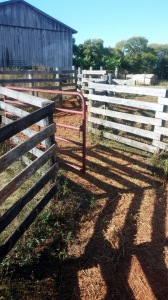
Most working facilities start with a series of pens and gate, sometimes leading to “tubs” or “sweeps” depending on their configuration. These shadows can cause problems with some cattle though, so you have to take that into account.
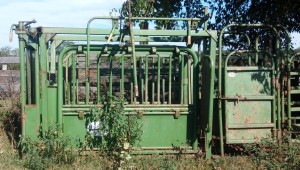
I had to go to the neighbor’s to get pictures of a squeeze chute. Ours is at another farm. Sometimes “portable” means “I left it the last place I used it.”
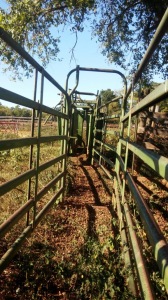
Here’s what a cow sees when she is heading down the alley. She’s focused on that gap right in front. She thinks she’s thin enough to get through there.
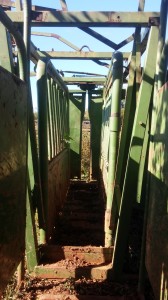
I’m not sure by what mental prowess a thousand lb. cow thinks she can get through this hole, but she does. We just let them.
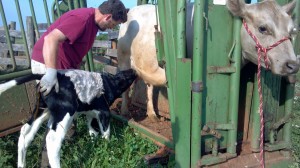
Here’s an old picture of Dixie in the squeeze chute, with Scott grafting a new calf to her. She doesn’t look too stressed.
Our facilities are pretty basic, but they work well for us. Our cows know the routine, and the calves just follow. And part of the reason this works is that we try very hard to make sure that a trip through the working pen isn’t an unpleasant experience. It seems a bit odd to say that, since some calves enter the squeeze chute as bulls, and emerge as steers, but they never seem to notice the transition. Weird.
Our cows come through the facilities a couple or three times a year. They get their vaccines, fly treatments and pregnancy checks. We get their weights, clean or replace their ear tags, check their feet.
Calves get weighed, tagged, and vaccinated. The males get castrated. And we make sure that it all gets recorded in CattleMax, a cattle tracking program. Keeping track of an animal’s medical history is the single most important thing we do on the farm to ensure the safety of your food.
While this all fairly straight-forward, there are a lot of individuals involved, some of them two-legged, some of them four-legged. Some of them are in a good mood. Some of them aren’t. Some are in a hurry. Some are not. It’s too hot. It’s too cold. It’s too windy. Somebody can’t find her calf. That’s where the drama begins.
Within the next couple of weeks we’ll be bringing cows and calves up for the fall herd check. I’ll keep you updated!
